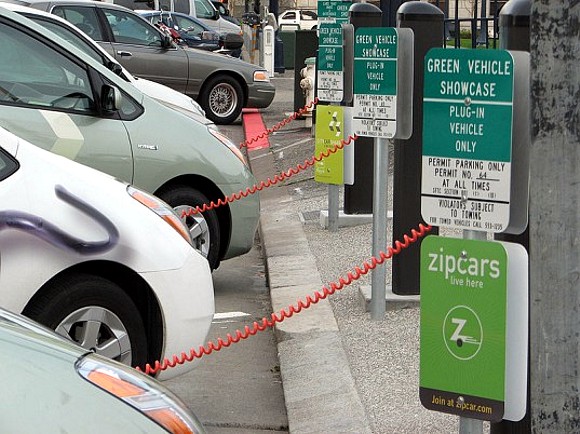California City To Change Building Codes To Allow Electric Vehicle Charging Infrastructure
 December 16, 2013
December 16, 2013  Kyriaki (Sandy) Venetis
Kyriaki (Sandy) Venetis Over the last several years, California has seen a huge upswing in the number of electric vehicles purchased, and with it a desire for more infrastructure to accommodate owners’ home recharging needs.
 In California, the City of Palo Alto’s city council is unanimously supporting a proposal to change the city’s building code to require new homes to be pre-wired to support 240v level 2 chargers. Photo courtesy of Treehugger.com.
In California, the City of Palo Alto’s city council is unanimously supporting a proposal to change the city’s building code to require new homes to be pre-wired to support 240v level 2 chargers. Photo courtesy of Treehugger.com.This is an increasingly important issue for the state, which found in a 2012 study conducted by the California Center for Sustainable Energy that about 1,000 new plug-in vehicles were being sold every month, and in total, Californians owned more than 12,000 plug-in vehicles at the time of the study (roughly 35 percent of all plug-in vehicles in the United States).
And while so far buying an electric vehicle has come with a lot of rebates and incentives for the vehicle itself, there really hasn’t been much cost help given for other needs, like home infrastructure.
A major stumbling block for many buyers wanting to buy an electric vehicle has been the cost of installing a home charging system. Grist reported that in Palo Alto, Calif., “to wire a new house for an electric vehicle charger, it costs under $200 – a quarter of the price tag for installing a charger at an existing home.”
To address this issue, Palo Alto’s city council is working on an ordinance that would require all newly constructed single family homes to include the necessary circuitry for electric vehicle chargers.




